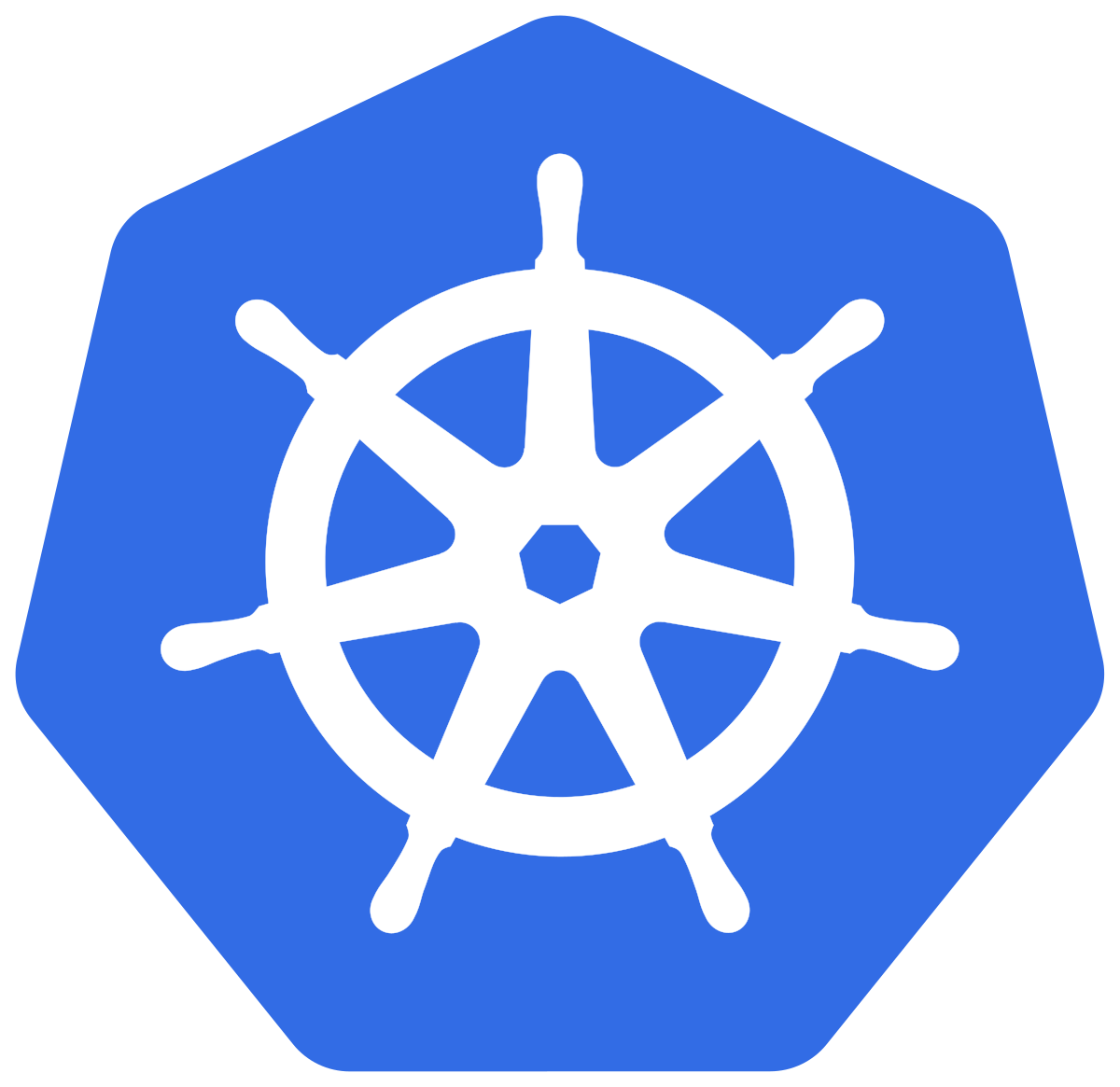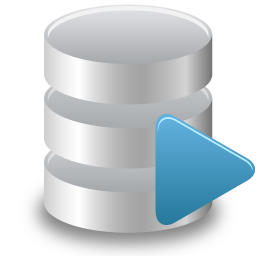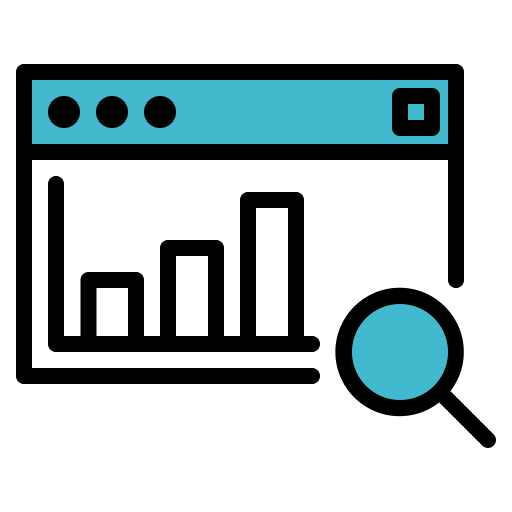ℹ️ This repository contains interview questions on various DevOps and SRE related topics
📊 There are currently 509 questions
🎉 Questions are now available at devopsbit.com 🎉
📚 To learn more about DevOps check the resources in DevOpsBit.com
💭 Different interviewers focus on different things. Some will focus on your resume while others might focus on scenario questions or specific technical questions. I tried to cover different types of questions for you to practice and test your skills
📝 You can add more questions & answers by submitting pull requests :) You can read more about it here
🇨🇳 You can find a 中文 Chinese translation right here
What is DevOps?
There are many good answers to this question. I like Amazon's description of DevOps:
"DevOps is the combination of cultural philosophies, practices, and tools that increases an organization’s ability to deliver applications and services at high velocity: evolving and improving products at a faster pace than organizations using traditional software development and infrastructure management processes. This speed enables organizations to better serve their customers and compete more effectively in the market."
You can find more details here: https://aws.amazon.com/devops/what-is-devops
What are the benefits of DevOps? What it can help us to achieve?
You should mention some or all of the following:
- Collaboration
- Improved delivery
- Security
- Speed
- Scale
- Reliability
Detailed answer can be found here: https://aws.amazon.com/devops/what-is-devops
What are the anti-patterns of DevOps?
What is Continuous Integration?
A development practice where developers integrate code into a shared repository frequently. It can range from a couple of changes every day or a week to a couple of changes in one hour in larger scales.
Each piece of code (change/patch) is verified, to make the change is safe to merge. Today, it's a common practice to test the change using an automated build that makes sure the code can integrated. It can be one build which runs several tests in different levels (unit, functional, etc.) or several separate builds that all or some has to pass in order for the change to be merged into the repository.
What is Continuous Deployment?
What is Continuous Delivery?
What CI/CD best practices are you familiar with? Or what do you consider as CI/CD best practice?
What systems and/or tools are you using for the following?:
- CI/CD
- Provisioning infrastructure
- Configuration Management
- Monitoring & alerting - Prometheus, DataDog, Sensu, Grafana
- Logging - ELK (Elastic Search, Logstash, Kibana), EFK (Elastic Search, Fluentd, Kibana)
- Code review
- Code coverage
- Tests
What are you taking into consideration when choosing a tool/technology?
In your answer you can mention one or more of the following:
- mature vs. cutting edge
- community size
- architecture aspects - agent vs. agentless, master vs. masterless, etc.
Explain mutable vs. immutable infrastructure
In mutable infrastructure paradigm, changes are applied on top of the existing infrastructure and over time the infrastructure builds up a history of changes. Ansible, Puppet and Chef are examples to tools which follow mutable infrastructure paradigm.
In immutable infrastructure paradigm, every change is actually new infrastructure. So a change to a server will result in a new server instead of updating it. Terraform is an example of technology which follows the immutable infrastructure paradigm.
What ways are you familiar with to deliver a software? What are the advantages and disadvantages of each method?
- Archive - collect all your app files into one archive (e.g. tar) and deliver it to the user.
- Package - depends on the OS, you can use your OS package format (e.g. in RHEL/Fefodra it's RPM) to deliver your software with a way to install, uninstall and update it using the standard packager commands
- Images - Either VM or container images where your package is included with everything it needs in order to run successfully.
What is caching? How it works? Why is it important?
Explain stateless vs. stateful
Stateless applications don't store any data in the host which makes it ideal for horizontal scaling and microservices. Stateful applications depend on the storage to save state and data, typically databases are stateful applications.
What is HTTP and how it works?
Describe the workflow of setting up some type of web server (Apache, IIS, Tomact, ...)
Explain "Open Source"
Compare SRE to DevOps
What SRE team is responsible for?
One can argue whether it's per company definition or a global one but at least according to a large companies, like Google for example, the SRE team is responsible for availability, latency, performance, efficiency, change management, monitoring, emergency response, and capacity planning of their services
What is an error budget?
What are MTTF (mean time to failure) and MTTR (mean time to repair)? What these metrics help us to evaluate?
What is a post-mortem meeting? Why is it important?
What is "infrastructure as code"? What implementation of IAC are you familiar with?
Tell me how you perform plan capacity for your CI/CD resources (e.g. servers, storage, etc.)
How would you structure/implement CD for an application which depends on several other applications?
How do you measure your CI/CD quality? Are there any metrics you are using for measuring the quality?
What is a configuration drift? What problems is it causing?
Configuration drift happens when in an environment of servers with the exact same configuration and software, a certain server or servers are being applied with updates or configuration which other servers don't get and over time these servers become slightly different than all others.
This situation might lead to bugs which hard to identify and reproduce.
How to deal with a configuration drift?
Do you have experience with testing cross-projects changes? (aka cross-dependency)
Note: cross-dependency is when you have two or more changes to separate projects and you would like to test them in mutual build instead of testing each change separately.
Have you contributed to an open source project? Tell me about this experience
When you publish a project, you usually publish it with a license. What types of licenses are you familiar with and which one do you prefer to use?
What is Jenkins? What have you used it for?
What are the advantages of Jenkins over its competitors? Can you compare it to one of the following systems?
- Travis
- Bamboo
- Teamcity
- CircleCI
Explain the following:
- Job
- Build
- Plugin
- Slave
- Executor
What plugins have you used in Jenkins?
Explain CI/CD and how you implemented it in Jenkins
What type of jobs are there? Which types have you used?
How did you report build results to users? What ways are you familiar with for reporting results?
You need to run unit tests every time a change submitted to a given project. Describe in details how your pipeline would look like and what will be executed in each stage
How to secure Jenkins?
Can you describe some of Jenkins best practices?
Describe how do you add new slaves to Jenkins
You can describe the UI way to add new slaves but better to explain how to do in a way that scales like a script or using dynamic source for slaves like one of the existing clouds.
How to acquire multiple slaves for one specific build?
There are four teams in your organization. How to prioritize the builds of each team? So the jobs of team x will always run before team y for example
If you are managing a dozen of jobs, you can probably use the Jenkins UI. How do you manage the creation and deletion of hundreds of jobs every week/month?
What are some of Jenkins limitations?
- Testing cross-dependencies (changes from multiple projects together)
- Starting builds from any stage (although cloudbees implemented something called checkpoints)
How would you implement an option of a starting a build from a certain stage and not from the beginning?
Do you have experience with developing a Jenkins plugin? Can you describe this experience?
Have you written Jenkins scripts? If yes, what for and how they work?
What are the advantages of cloud computing? Mention at least 3 advantages
What types of Cloud Computing are there?
IAAS PAAS SAAS
Explain each of the following Cloud Computing Deployments:
- Public
- Hybrid
- Private
Explain the following
- Availability zone
- Region
- Edge location
AWS regions are data centers hosted across different geographical locations worldwide, each region is completely independent of one another. Within each region,There are multiple isolated locations known as Availability Zones. Multiple availability zones insure high availability in case one of them goes down.
Edge locations are basically content delivery network which caches data and insures lower latency and faster delivery to the users in any location. They are located in major cities in the world.
What is IAM?
Explain what is S3 and what is it used for
S3 stands for 3 S, Simple Storage Service. S3 is a object storage service which is fast, scalable and durable. S3 enables customers to upload, download or store any file or object that is up to 5 TB in size. While having a maximum size of 5 GB per file (multipart upload if more than 5 GB in size).
What is a bucket?
An S3 bucket is a resource which is similar to folders in a file system and allows storing objects, which consist of data and its meta data.
True or False? A bucket name must be globally unique
True
What objects in S3 consists of? * Another way to ask it: explain key, value, version id and meta data in context of objects
Explain data consistency
Can you host dynamic websites on S3?. What about static websites?
What security measures have you taken in context of S3?
What is a storage class? What storage classes are you familiar with?
What is EC2? What is it used for?
What EC2 pricing models are there?
How to increase RAM for a given EC2 instance?
Stop the instance, the type of the instance to match the desired RAM and start the instance.
What is an AMI?
How many storage options are there for EC2 Instances?
What happens when an EC2 instance is stopped or terminated?
What are Security Groups?
How to migrate an instance to another availability zone?
What are spot instances?
Explain what is CloudFront and what is it used for
Explain the following * Origin * Edge location * Distribution
What delivery methods available for the user with CDN?
True or False?. Objects are cached for the life of TTL
What types of load balancers are supported in EC2 and what are they used for?
- Application LB - layer 7 traffic
- Network LB - ultra-high performances or static IP address
- Classic LB - low costs, good for test or dev environments
What is RDS?
What are some features or benefits of using RDS?
- Multi AZ - great for Disaster Recovery
- Read Replicas - for better performances
What is EBS?
What is VPC?
What is Ethernet?
What is a MAC address? What is it used for?
When is this MAC address used?: ff:ff:ff:ff:ff:ff
What is an IP address?
Explain subnet mask and given an example
What is a private IP address? What do we need it for?
Explain the OSI model. What layers there are? What each layer is responsible for?
Application: user end (HTTP is here) Presentation: establishes context between application-layer entities (Encryption is here) Session: establishes, manages and terminates the connections Transport: transfers variable-length data sequences from a source to a destination host (TCP & UDP are here) Network: transfers datagrams from one network to another (IP is here) Data link: provides a link between two directly connected nodes (MAC is here) Physical: the electrical and physical spec the data connection (Bits are here)
For each of the following determine to which OSI layer it belongs:
- Error correction
- Packets routing
- Cables and electrical signals
- MAC address
- IP address
- Sessions between applications
- 3 way handshake
What delivery schemes are you familiar with?
Unitcast: One to one communication where there is one sender and one receiver.
Broadcast: Sending a message to everyone in the network. The address ff:ff:ff:ff:ff:ff is used for broadcasting. Two common protocols which use broadcast are ARP and DHCP.
Multicast: Sending a message to a group of subscribers. It can be one-to-many or many-to-many.
What is CSMA/CD? Is it used in modern ethernet networks?
CSMA/CD stands for Carrier Sense Multiple Access / Collision Detection. Its primarily focus it to manage access to shared medium/bus where only one host can transmit at a given point of time.
CSMA/CD algorithm:
- Before sending a frame, it checks whether another host already transmitting a frame.
- If no one transmitting, it starts transmitting the frame.
- If two hosts transmitted at the same time, we have a collision.
- Both hosts stop sending the frame and they send to everyone a 'jam signal' notifying everyone that a collision occurred
- They are waiting for a random time before sending again
- Once each host waited for a random time, they try to send the frame again and so the
Describe the following network devices and the difference between them:
- router
- switch
- hub
What is NAT?
What is a proxy? How it works? What do we need it for?
What is the difference between TCP and UDP?
TCP establishes a connection between the client and the server to guarantee the order of the packages, on the other hand, UDP does not establish a connection between client and server and doesn't handle package order. This makes UDP more lightweight than TCP and a perfect candidate for streaming services.
Explain "default gateway"
How TCP works? What is the 3 way handshake?
What is ARP? How it works?
What is TTL?
What is DHCP? How it works?
What is SSL tunneling? How it works?
What is a socket? Where can you see the list of sockets in your system?
What is IPv6? Why should we consider using it if we have IPv4?
What is VLAN?
What is MTU?
True or False?. Ping is using UDP because it doesn't care about reliable connection
What is SDN?
What is ICMP? What is it used for?
What is NAT? How it works?
Explain Spanning Tree Protocol (STP)
What is link aggregation? Why is it used?
What is Asymmetric Routing? How do deal with it?
What overlay (tunnel) protocols are you familiar with?
What is GRE? How it works?
What is VXLAN? How it works?
What is SNAT?
Explain OSPF
Explain Spine & Leaf
Using Hamming code, what would be the code word for the following data word 100111010001101?
00110011110100011101
What is your experience with Linux? When you can set up an application on multiple operating systems, on which one would you prefer to set it up and why?
Explain what each of the following commands does and give an example on how to use it:
- ls
- rm
- rmdir (can you achieve the same result by using
rm?)
- grep
- wc
- curl
- touch
- man
- nslookup or dig
- df
rm?)Running the command df you get "command not found". What could be wrong and how to fix it?
How to make sure a service will start on a OS of your choice?
How do you schedule tasks periodically?
You can use the commands cron and at.
With cron, tasks are scheduled using the following format:
The tasks are stored in a cron file.
Have you scheduled tasks in the past? What kind of tasks?
Normally you will schedule batch jobs.
How to change the permissions of a file?
Using the chmod command.
What does the following permissions mean?:
- 777
- 644
- 750
777 - means you are lazy 644 - owner has read+write permissions and everyone else can only read 750 - owner can do anything, group can read and execute and others can do nothing
Explain what is setgid, setuid and sticky bit
You try to delete a file but it fails. Name at least three different reason as to why it could happen
What is systemd?
On a system which uses systemd, how would display the logs?
journalctl
What are you using for troubleshooting and debugging network issues?
dstat -t is great for identifying network and disk issues.
netstat -tnlaup can be used to see which processes are running on which ports.
lsof -i -P can be used for the same purpose as netstat.
ngrep -d any metafilter for matching regex against payloads of packets.
tcpdump for capturing packets
wireshark same concept as tcpdump but with GUI (optional).
What are you using for troubleshooting and debugging disk & file system issues?
dstat -t is great for identifying network and disk issues.
opensnoop can be used to see which files are being opened on the system (in real time).
What are you using for troubleshooting and debugging process issues?
strace is great for understanding what your program does. It prints every system call your program executed.
What are you using for debugging CPU related issues?
top will show you how much CPU percentage each process consumes
perf is a great choice for sampling profiler and in general, figuring out what your CPU cycles are "wasted" on
flamegraphs is great for CPU consumption visualization (http://www.brendangregg.com/flamegraphs.html)
You get a call saying "my system is slow" - how would you deal with it?
- Check with
topif anything consumes your CPU or RAM. - Run
dstat -tto check if it's related to disk or network. - Check I/O stats with
iostat
How to debug binaries?
What is a Linux kernel module and how do you load a new module?
What is KVM?
What is the difference between SSH and SSL?
What is SSH port forwarding?
Explain redirection
What are wildcards? Can you give an example of how to use them?
What do we grep for in each of the following commands?:
grep '[0-9]{1,3}.[0-9]{1,3}.[0-9]{1,3}.[0-9]{1,3}' some_filegrep -E "error|failure" some_filegrep '[0-9]$' some_file
grep '[0-9]{1,3}.[0-9]{1,3}.[0-9]{1,3}.[0-9]{1,3}' some_filegrep -E "error|failure" some_filegrep '[0-9]$' some_file- An IP address
- The word "error" or "failure"
- Lines which end with a number
Tell me everything you know about Linux boot process
What is an exit code? What exit codes are you familiar with?
An exit code (or return code) represents the code returned by a child process to its parent process.
0 is an exit code which represents success while anything higher than 1 represents error. Each number has different meaning, based on how the application was developed.
I consider this as a good blog post to read more about it: https://shapeshed.com/unix-exit-codes
What is the difference between a soft link and hard link?
Hard link is the same file, using the same inode. Soft link is a shortcut to another file, using a different inode.
Soft links can be created between different file systems while. Hard link can be created only within the same file system.
What happens when you delete the original file in case of soft link and hard link?
What is a swap partition? What is it used for?
You are trying to create a new file but you get "File system is full". You check with df for free space and you see you used only 20% of the space. What could be the problem?
What do you know about LVM?
Explain the following in regards to LVM:
- PV
- VG
- LV
What is NFS? What is it used for?
What RAID is used for? Can you explain the differences between RAID 0, 1, 5 and 10?
What is lazy umount?
Fix the following commands:
- sed "s/1/2/g' /tmp/myFile
- find . -iname *.yaml -exec sed -i "s/1/2/g" {} ;
Explain what is stored in each of the following paths and if there is anything unique about it:
- /tmp
- /var/log
- /bin
- /proc
- /usr/local
What is chroot?
How to run a process in the background and why to do that in the first place?
You can achieve that by specifying & at end of the command. As to why, since some commands/processes can take a lot of time to finish execution or run forever
How can you find how much memory a specific process consumes?
What signal is used when you run 'kill '?
The default signal is SIGTERM (15). This signal kills process gracefully which means it allows it to save current state configuration.
What signals are you familiar with?
SIGTERM - default signal for terminating a process SIGHUP - common usage is for reloading configuration SIGKILL - a signal which cannot caught or ignored
To view all available signals run kill -l
What is a trap?
What happens when you press ctrl + c?
What are daemons?
What are the possible states of a process in Linux?
Running Waiting Stopped Terminated Zombie
What is a zombie process? How do you get rid of it?
What is the init process?
How to change the priority of a process? Why would you want to do that?
Can you explain how network process/connection is established and how it's terminated?>
What are system calls? What system calls are you familiar with?
What strace does?
Find all the files which end with '.yml' and replace the number 1 in 2 in each file
ind /some_dir -iname *.yml -print0 | xargs -0 -r sed -i "s/1/2/g"
How to check how much free memory a system has? How to check memory consumption by each process?
You can use the commands top and free
How would you split a 50 lines file into 2 files of 25 lines each?
You can use the split command this way: split -l 25 some_file
What is a file descriptor? What file descriptors are you familiar with?
Kerberos File descriptor, also known as file handler, is a unique number which identifies an open file in the operating system.
In Linux (and Unix) the first three file descriptors are:
- 0 - the default data stream for input
- 1 - the default data stream for output
- 2 - the default data stream for output related to errors
This is a great article on the topic: https://www.computerhope.com/jargon/f/file-descriptor.htm
What's an inode?
For each file (and directory) in Linux there is an inode, a data structure which stores meta data related to the file like its size, owner, permissions, etc.
How to list active connections?
What is NTP? What is it used for?
Explain Kernel OOM
What is SELiunx?
What is Kerberos?
What is nftables?
What firewalld daemon is responsible for?
What is a network namespace? What is it used for?
How can you turn your Linux server into a router?
What is a virtual IP? In what situation would you use it?
Which port is used in each of the following protocols?:
- SSH
- HTTP
- DNS
- HTTPS
What is the routing table? How do you view it?
What are packet sniffers? Have you used one in the past? If yes, which packet sniffers have you used and for what purpose?
What is DNS? Why do we need it?
What the file /etc/resolv.conf is used for? What does it include?
What is a "A record"?
What is a PTR record?
While an A record points a domain name to an IP address, a PTR record does the opposite and resolves the IP address to a domain name.
What is a MX record?
Is DNS using TCP or UDP?
Do you have experience with packaging? Can you explain how it works?
RPM: explain the spec format(what it should and can include)
How do you list the content of a package without actually installing it?
What is a load balancer?
What load balancer algorithms are you familiar with?
What is a proxy?
What is a reverse proxy?
What can you find in /etc/services
You run ssh 127.0.0.1 but it fails with "connection refused". What could be the problem?
- SSH server is not installed
- SSH server is not running
How to print the shared libraries required by a certain program? What is it useful for?
What happens when you execute ls?. Provide a detailed answer
Can you describe how processes are being created?
What does the following block do?:
open("/my/file") = 5
read(5, "file content")
open("/my/file") = 5
read(5, "file content")
These system calls are reading the file /my/file and 5 is the file descriptor number.
What is the difference between a process and a thread?
When you run ip a you see there is a device called 'lo'. What is it and why do we need it?
What traceroute command does? How it works?
What is network bonding? What types are you familiar with?
How to link two separate network namespaces so you can ping an interface on one namespace from the second one?
What are cgroups? In what scenario would you use them?
How to create a file of a certain size?
There are a couple of ways to do that:
- dd if=/dev/urandom of=new_file.txt bs=2MB count=1
- truncate -s 2M new_file.txt
- fallocate -l 2097152 new_file.txt
What are the differences between the following system calls?: exec(), fork(), vfork() and clone()?
Explain Process Descriptor and Task Structure
What are the differences between threads and processes?
Explain Kernel Threads
What happens when socket system call is used?
This is a good article about the topic: https://ops.tips/blog/how-linux-creates-sockets
You executed a script and while still running, it got accidentally removed. Is it possible to restore the script while it's still running?
Describe each of the following components in Ansible, including the relationship between them:
- Task
- Module
- Play
- Playbook
- Role
Task – a call to a specific Ansible module Module – the actual unit of code executed by Ansible on your own host or a remote host. Modules are indexed by category (database, file, network, …) and also referred as task plugins.
Play – One or more tasks executed on a given host(s)
Playbook – One or more plays. Each play can be executed on the same or different hosts
Role – Ansible roles allows you to group resources based on certain functionality/service such that they can be easily reused. In a role, you have directories for variables, defaults, files, templates, handlers, tasks, and metadata. You can then use the role by simply specifying it in your playbook.
Which Ansible best practices are you familiar with?. Name at least three
What is an inventory file and how you define one?
An inventory file defines hosts and/or groups of hosts on which Ansible tasks executed upon.
An example of inventory file:
192.168.1.2 192.168.1.3 192.168.1.4
[web_servers] 190.40.2.20 190.40.2.21 190.40.2.22
What is a dynamic inventory file? When you would use one?
A dynamic inventory file tracks hosts from one or more sources like cloud providers and CMDB systems.
You should use one when using external sources and especially when the hosts in your environment are being automatically
spun up and shut down, without you tracking every change in these sources.
You want to run Ansible playbook only on specific minor version of your OS, how would you achieve that?
Write a task to create the directory ‘/tmp/new_directory’
- name: Create a new directory
file:
path: "/tmp/new_directory"
state: directory
What would be the result of the following play?
---
- name: Print information about my host
hosts: localhost
gather_facts: 'no'
tasks:
- name: Print hostname
debug:
msg: "It's me, {{ ansible_hostname }}"
When given a written code, always inspect it thoroughly. If your answer is “this will fail” then you are right. We are using a fact (ansible_hostname), which is a gathered piece of information from the host we are running on. But in this case, we disabled facts gathering (gather_facts: no) so the variable would be undefined which will result in failure.
Write a playbook to install ‘zlib’ and ‘vim’ on all hosts if the file ‘/tmp/mario’ exists on the system.
---
- hosts: all
vars:
mario_file: /tmp/mario
package_list:
- 'zlib'
- 'vim'
tasks:
- name: Check for mario file
stat:
path: "{{ mario_file }}"
register: mario_f
- name: Install zlib and vim if mario file exists
become: "yes"
package:
name: "{{ item }}"
state: present
with_items: "{{ package_list }}"
when: mario_f.stat.exists
Write a playbook to deploy the file ‘/tmp/system_info’ on all hosts except for controllers group, with the following content
I'm <HOSTNAME> and my operating system is <OS>
Replace and with the actual data for the specific host you are running on
The playbook to deploy the system_info file
---
- name: Deploy /tmp/system_info file
hosts: all:!controllers
tasks:
- name: Deploy /tmp/system_info
template:
src: system_info.j2
dest: /tmp/system_info
The content of the system_info.j2 template
# {{ ansible_managed }}
I'm {{ ansible_hostname }} and my operating system is {{ ansible_distribution }
The variable 'whoami' defined in the following places:
- role defaults -> whoami: mario
- extra vars (variables you pass to Ansible CLI with -e) -> whoami: toad
- host facts -> whoami: luigi
- inventory variables (doesn’t matter which type) -> whoami: browser
According to variable precedence, which one will be used?
The right answer is ‘toad’.
Variable precedence is about how variables override each other when they set in different locations. If you didn’t experience it so far I’m sure at some point you will, which makes it a useful topic to be aware of.
In the context of our question, the order will be extra vars (always override any other variable) -> host facts -> inventory variables -> role defaults (the weakest).
A full list can be found at the link above. Also, note there is a significant difference between Ansible 1.x and 2.x.
For each of the following statements determine if it's true or false:
- A module is a collection of tasks
- It’s better to use shell or command instead of a specific module
- Host facts override play variables
- A role might include the following: vars, meta, and handlers
- Dynamic inventory is generated by extracting information from external sources
- It’s a best practice to use indention of 2 spaces instead of 4
- ‘notify’ used to trigger handlers
- This “hosts: all:!controllers” means ‘run only on controllers group hosts
What is ansible-pull? How it’s different compared to ansible-playbook?
What are filters? Do you have experience with writing filters?
Write a filter to capitalize a string
def cap(self, string):
return string.capitalize()
How do you test your Ansible based projects?
What are callback plugins? What can you achieve by using callback plugins?
What benefits infrastructure-as-code has?
- fully automated process of provisioning, modifying and deleting your infrastructure
- version control for your infrastructure which allows you to quickly rollback to previous versions
- validate infrastructure quality and stability with automated tests and code reviews
- makes infrastructure tasks less repetitive
Why Terraform and not other technologies? (e.g. Ansible, Puppet, CloufFormation)
A common wrong answer is to say that Ansible and Puppet are configuration management tools and Terraform is a provisioning tool. While technically true, it doesn't mean Ansible and Puppet can't be used for provisioning infrastructure. Also, it doesn't explain why Terraform should be used over CloudFormation if at all.
The benefits of Terraform over the other tools:
- It follows the immutable infrastructure approach which has benefits like avoiding a configuration drift over time
- Ansible and Puppet are more procedural (you mention what to execute in each step) and Terraform is declarative since you describe the overall desired state and not per resource or task. You can give the example of going from 1 to 2 servers in each tool. In Terraform you specify 2, in Ansible and puppet you have to only provision 1 additional server so you need to explicitly make sure you provision only another one server.
Explain what is "Terraform configuration"
Explain each of the following:
- Provider
- Resource
- Provisioner
What terraform.tfstate file is used for?
It keeps track of the IDs of created resources so that Terraform knows what it is managing.
Explain what the following commands do:
terraform initterraform planterraform validateterraform apply
terraform initterraform planterraform validateterraform applyterraform init scans your code to figure which providers are you using and download them.
terraform plan will let you see what terraform is about to do before actually doing it.
terraform apply will provision the resources specified in the .tf files.
How to write down a variable which changes by an external source or during terraform apply?
You use it this way: variable “my_var” {}
Give an example of several Terraform best practices
Explain how implicit and explicit dependencies work in Terraform
What is local-exec and remote-exec in the context of provisioners?
What is a "tainted resource"?
It's a resource which was successfully created but failed during provisioning. Terraform will fail and mark this resource as "tainted".
What terraform taint does?
What types of variables are supported in Terraform?
String Integer Map List
What is a data source? In what scenarios for example would need to use it?
What are output variables and what terraform output does?
Explain Modules
What is the Terraform Registry?
Explain remote-exec and local-exec
Explain "Remote State". When would you use it and how?
Explain "State Locking"
What is Docker? What are you using it for?
How containers are different from VMs?
The primary difference between containers and VMs is that containers allow you to virtualize multiple workloads on the operating system while in the case of VMs the hardware is being virtualized to run multiple machines each with its own OS.
In which scenarios would you use containers and in which you would prefer to use VMs?
You should choose VMs when:
- you need run an application which requires all the resources and functionalities of an OS
- you need full isolation and security
You should choose containers when:
- you need a lightweight solution that quickly starts
- Running multiple versions or instances of a single application
Explain Docker architecture
Describe in detail what happens when you run `docker run hello-world`?
Docker CLI passes your request to Docker daemon. Docker daemon downloads the image from Docker Hub Docker daemon creates a new container by using the image it downloaded Docker daemon redirects output from container to Docker CLI which redirects it to the standard output
How do you run a container?
What best practices are you familiar related to working with containers?
What `docker commit` does?. When will you use it?
How would you transfer data from one container into another?
What happens to data of the container when a container exists?
Explain what each of the following commands do:
- docker run
- docker rm
- docker ps
- docker build
- docker commit
How do you remove old, non running, containers?
What is Dockerfile
What is the difference between ADD and COPY in Dockerfile?
What is the difference between CMD and RUN in Dockerfile?
Explain what is Docker compose and what is it used for
What are the differences between Docker compose, Docker swarm and Kubernetes?
Explain Docker interlock
What is the difference between Docker Hub and Docker cloud?
Docker Hub is a native Docker registry service which allows you to run pull and push commands to install and deploy Docker images from the Docker Hub.
Docker Cloud is built on top of the Docker Hub so Docker Cloud provides you with more options/features compared to Docker Hub. One example is Swarm management which means you can create new swarms in Docker Cloud.
Where Docker images are stored?
Explain image layers
How do you manage persistent storage in Docker?
How can you connect from the inside of your container to the localhost of your host, where the container runs?
How do you copy files from Docker container to the host and vice versa?
What is Kubernetes?
Why Docker isn't enough? Why do we need Kubernetes?
Kubernetes is especially good for scenarios when you no longer running small number of containers. When you have to scale from 3 containers for eaxmple to hundreds or thousands of containers.
Describe the architecture of Kubernetes
What is a worker?
Explain what is a Pod
How do you monitor your Kubernetes?
What is kubectl? How do you use it?
What is kubconfig? What do you use it for?
How do you create users? Where user information is stored?
Do you know how to create a new user without using adduser/useradd command?
How to add a new user to the system without providing him the ability to log-in into the system?
- adduser user_name --shell=/bin/false --no-create-home
What can you do if you lost/forogt the root password?
Re-install the OS IS NOT the right answer :)
What is sudo? How do you set it up?
What programming language do you prefer to use for DevOps related tasks? Why specifically this one?
What is Object Oriented Programming? Why is it important?
Explain recursion
Explain what are design patterns and describe three of them in detail
Explain big O notation
What are your code-review best practices?
Do you agree/disagree with each of the following statements and why?:
- The commit message is not important. When reviewing a change/patch one should focus on the actual change
In any language you want, write a function to determine if a given string is a palindrome
In any language you want, write a function to determine if two strings are Anagrams
Name 3 design patterns. Do you know how to implement (= provide an example) these design pattern in any language you'll choose?
What are some characteristics of the Python programming language?
1. It is a high level general purpose programming language created in 1991 by Guido Van Rosum.
2. The language is interpreted, being the CPython (Written in C) the most used/maintained implementation.
3. It is strongly typed. The typing discipline is duck typing and gradual.
4. Python focuses on readability and makes use of whitespaces/identation instead of brackets { }
5. The python package manager is called PIP "pip installs packages", having more than 200.000 available packages.
6. Python comes with pip installed and a big standard library that offers the programmer many precooked solutions.
7. In python **Everything** is an object.
There are many other characteristics but these are the main ones that every python programmer should know.
What data types supported in Python and which of them are mutable? How can you show that a certain data type is mutable?
The mutable data types are:
List
Dictionary
Set
The immutable data types are:
Numbers (int, float, ...)
String
Bool
Tuple
Frozenset
You can usually use the function hash() to check an object mutability, if it is hashable it is immutable, although this does not always work as intended as user defined objects might be mutable and hashable
What is PEP8? Give an example of 3 style guidelines
PEP8 is a list of coding conventions and style guidelines for Python
5 style guidelines:
1. Limit all lines to a maximum of 79 characters.
2. Surround top-level function and class definitions with two blank lines.
3. Use commas when making a tuple of one element
4. Use spaces (and not tabs) for indentation
5. Use 4 spaces per indentation level
Explain inheritance and how to use it in Python
By definition inheritance is the mechanism where an object acts as a base of another object, retaining all its
properties.
So if Class B inherits from Class A, every characteristics from class A will be also available in class B.
Class A would be the 'Base class' and B class would be the 'derived class'.
This comes handy when you have several classes that share the same functionalities.
The basic syntax is:
class Base: pass
class Derived(Base): pass
A more forged example:
class Animal:
def __init__(self):
print("and I'm alive!")
def eat(self, food):
print("ñom ñom ñom", food)
class Human(Animal):
def __init__(self, name):
print('My name is ', name)
super().__init__()
def write_poem(self):
print('Foo bar bar foo foo bar!')
class Dog(Animal):
def __init__(self, name):
print('My name is', name)
super().__init__()
def bark(self):
print('woof woof')
michael = Human('Michael')
michael.eat('Spam')
michael.write_poem()
bruno = Dog('Bruno')
bruno.eat('bone')
bruno.bark()
>>> My name is Michael
>>> and I'm alive!
>>> ñom ñom ñom Spam
>>> Foo bar bar foo foo bar!
>>> My name is Bruno
>>> and I'm alive!
>>> ñom ñom ñom bone
>>> woof woof
Calling super() calls the Base method, thus, calling super().__init__() we called the Animal __init__.
There is a more advanced python feature called MetaClasses that aid the programmer to directly control class creation.
What is an error? What is an exception? What types of exceptions are you familiar with?
# Note that you generally don't need to know the compiling process but knowing where everything comes from
# and giving complete answers shows that you truly know what you are talking about.
Generally, every compiling process have a two steps.
- Analysis
- Code Generation.
Analysis can be broken into:
1. Lexical analysis (Tokenizes source code)
2. Syntactic analysis (Check whether the tokens are legal or not, tldr, if syntax is correct)
for i in 'foo'
^
SyntaxError: invalid syntax
We missed ':'
3. Semantic analysis (Contextual analysis, legal syntax can still trigger errors, did you try to divide by 0,
hash a mutable object or use an undeclared function?)
1/0
ZeroDivisionError: division by zero
These three analysis steps are the responsible for error handlings.
The second step would be responsible for errors, mostly syntax errors, the most common error.
The third step would be responsible for Exceptions.
As we have seen, Exceptions are semantic errors, there are many builtin Exceptions:
ImportError
ValueError
KeyError
FileNotFoundError
IndentationError
IndexError
...
You can also have user defined Exceptions that have to inherit from the `Exception` class, directly or indirectly.
Basic example:
class DividedBy2Error(Exception):
def __init__(self, message):
self.message = message
def division(dividend,divisor):
if divisor == 2:
raise DividedBy2Error('I dont want you to divide by 2!')
return dividend / divisor
division(100, 2)
>>> __main__.DividedBy2Error: I dont want you to divide by 2!
Explain Exception Handling and how to use it in Python
Write a program which will revert a string (e.g. pizza -> azzip)
Shortest way is str[::-1] but not the most efficient.
"Classic" way:
foo = ''
for char in 'pizza':
foo = char + foo
>> 'azzip'
How to extract the unique characters from a string? for example given the input "itssssssameeeemarioooooo" the output will be "mrtisaoe"
x = "itssssssameeeemarioooooo"
y = ''.join(set(x))
Write a function to return the sum of one or more numbers. The user will decide how many numbers to use
First you ask the user for the amount of numbers that will be use. Use a while loop that runs until amount_of_numbers becomes 0 through subtracting amount_of_numbers by one each loop. In the while loop you want ask the user for a number which will be added a variable each time the loop runs.
def return_sum():
amount_of_numbers = int(input("How many numbers? "))
total_sum = 0
while amount_of_numbers != 0:
num = int(input("Input a number. "))
total_sum += num
amount_of_numbers -= 1
return total_sum
How to merge two sorted lists into one sorted list?
How to merge two dictionaries?
How do you swap values between two variables?
x, y = y, x
How to check if all the elements in a given lists are unique? so [1, 2, 3] is unique but [1, 1, 2, 3] is not unique but we 1 twice
What _ is used for in Python?
- Translation lookup in i18n
- Hold the result of the last executed expression or statement in the interactive interpreter.
- As a general purpose "throwaway" variable name. For example: x, y, _ = get_data() (x and y are used but since we don't care about third variable, we "threw it away").
How to check how much time it took to execute a certain script or block of code?
Can you implement "binary search" in Python?
How to write to a file?
with open('file.txt', 'w') as file:
file.write("My insightful comment")
How to reverse a file?
How do you perform regular expressions related operations in Python? (match patterns, substitute strings, etc.)
Using the re module
How to substitute the string "green" with "blue"?
How to find all the IP addresses in a variable? How to find them in a file?
Sort a list of lists by the second item of each nested list
li = [[1, 4], [2, 1], [3, 9], [4, 2], [4, 5]]
sorted(x, key=lambda l: l[1])
Can you write a function which will print all the file in a given directory? including sub-directories
You have the following list: [{'name': 'Mario', 'food': ['mushrooms', 'goombas']}, {'name': 'Luigi', 'food': ['mushrooms', 'turtles']}]
Extract all type of foods. Final output should be: {'mushrooms', 'goombas', 'turtles'}
brothers_menu = \
[{'name': 'Mario', 'food': ['mushrooms', 'goombas']}, {'name': 'Luigi', 'food': ['mushrooms', 'turtles']}]
# "Classic" Way
def get_food(brothers_menu) -> set:
temp = []
for brother in brothers_menu:
for food in brother['food']:
temp.append(food)
return set(temp)
# One liner way (Using list comprehension)
set([food for bro in x for food in bro['food']])
What is List Comprehension? Is it better than a typical loop? Why? Can you demonstrate how to use it?
How to reverse a string?
Shortest way is: my_string[::-1] but it doesn't mean it's the most efficient one.
Cassic way is:
def reverse_string(string):
temp = ""
for char in string:
temp = char + temp
return temp
How to sort a dictionary by values?
How to sort a dictionary by keys?
Explain data serialization and how do you perform it with Python
How do you handle argument parsing in Python?
Explain what is GIL
What is a generator? Why using generators?
Explain the following types of methods and how to use them:
- Static method
- Class method
- instance method
How to reverse a list?
How to combine list of strings into one string with spaces between the strings
What empty return returns?
Describe what would be the time complexity of the operations access, search insert and remove for the following data structures:
- Stack
- Queue
- Linked List
- Binary Search Tree
What is the complexity for the best, worst and average cases of each of the following algorithms?:
- Quick sort
- Merge sort
- Bucket Sort
- Radix Sort
Explain what is a decorator
Can you show how to write and use decorators?
Write a script which will determine if a given host is accessible on a given port
Are you familiar with Dataclasses? Can you explain what are they used for?
Explain Context Manager
Explain the Buffer Protocol
Explain Descriptors
Do you have experience with web scraping? Can you describe what have you used and for what?
Can you implement Linked List in Python?
You have created a web page where a user can upload a document. But the function which reads the uploaded files, runs for a long time, based on the document size and user has to wait for the read operation to complete before he/she can continue using the web site. How can you overcome this?
Explain monitoring. What is it? What its goal?
What is wrong with the old approach of watching for a specific value and trigger an email/phone alert while value is exceeded?
This approach require from a human to always check why the value exceeded and how to handle it while today, it is more effective to notify people only when they need to take an actual action. If the issue doesn't require any human intervention, then the problem can be fixed by some processes running in the relevant environment.
What types of monitoring outputs are you familiar with and/or used in the past?
Alerts Tickets Logging
What is the different between infrastructure monitoring and application monitoring? (methods, tools, ...)
What is Prometheus? What are some of Prometheus's main features?
Describe Prometheus architecture and components
Can you compare Prometheus to other solutions like InfluxDB for example?
What is an Alert?
Describe the following Prometheus components:
- Prometheus server
- Push Gateway
- Alert Manager
Prometheus server responsible for scraping the storing the data
Push gateway is used for short-lived jobs
Alert manager is responsible for alerts ;)
What is an Instance? What is a Job?
What core metrics types Prometheus supports?
What is an exporter? What is it used for?
Which Prometheus best practices are you familiar with?. Name at least three
How to get total requests in a given period of time?
How do you join two metrics?
How to write a query that returns the value of a label?
How do you convert cpu_user_seconds to cpu usage in percentage?
What is the difference between git pull and git fetch?
Shortly, git pull = git fetch + git merge
When you run git pull, it gets all the changes from the remote or central repository and attaches it to your corresponding branch in your local repository.
git fetch gets all the changes from the remote repository, stores the changes in a separate branch in your local repository
Explain the following: git directory, working directory and staging area
The Git directory is where Git stores the meta data and object database for your project. This is the most important part of Git, and it is what is copied when you clone a repository from another computer.
The working directory is a single checkout of one version of the project. These files are pulled out of the compressed database in the Git directory and placed on disk for you to use or modify.
The staging area is a simple file, generally contained in your Git directory, that stores information about what will go into your next commit. It’s sometimes referred to as the index, but it’s becoming standard to refer to it as the staging area.
This answer taken from git-scm.com
How to resolve git merge conflicts?
First, you open the files which are in conflict and identify what are the conflicts. Next, based on what is accepted in your company or team, you either discuss with your colleagues on the conflicts or resolve them by yourself After resolving the conflicts, you add the files with `git add ` Finally, you run `git rebase --continue`
What is the difference between git reset and git revert?
git revert creates a new commit which undoes the changes from last commit.
git reset depends on the usage, can modify the index or change the commit which the branch head
is currently pointing at.
You would like to move forth commit to the top. How would you achieve that?
Using git rebase> command
In what situations are you using git rebase?
What merge strategies are you familiar with?
Mentioning two or three should be enough and it's probably good to mention that 'recursive' is the default one.
recursive resolve ours theirs
This page explains it the best: https://git-scm.com/docs/merge-strategies
How can you see which changes have done before committing them?
git diff
How do you revert a specific file to previous commit?
git checkout HEAD~1 -- /path/of/the/file
What is the .git directory? What can you find there?
What are some Git anti-patterns? Things that you shouldn't do
- Not waiting to long between commits
- Not removing the .git directory :)
Explain Git octopus merge
Probably good to mention that it's:
- It's good for cases of merging more than one branch (and also the default of such use cases)
- It's primarily meant for bundling topic branches together
This is a great article about Octopus merge: http://www.freblogg.com/2016/12/git-octopus-merge.html
What are some characteristics of the Go programming language?
- Strong and static typing - the type of the variables can't be changed over time and they have to be defined at compile time
- Simplicity
- Fast compile times
- Built-in concurrency
- Garbage collected
- Platform independent
- Compile to standalone binary - anything you need to run your app will be compiled into one binary. Very useful for version management in run-time.
Go also has good community.
What is the difference between var x int = 2 and x := 2?
The result is the same, a variable with the value 2.
With var x int = 2 we are setting the variable type to integer while with x := 2 we are letting Go figure out by itself the type.
True or False? In Go we can redeclare variables and once declared we must use it.
False. We can't redeclare variables but yes, we must used declared variables.
What libraries of Go have you used?
This should be answered based on your usage but some examples are:
- fmt - formatted I/O
What is the problem with the following block of code? How to fix it?
func main() {
var x float32 = 13.5
var y int
y = x
}
func main() {
var x float32 = 13.5
var y int
y = x
}
The following block of code tries to convert the integer 101 to a string but instead we get "e". Why is that? How to fix it?
package main
import "fmt"
func main() {
var x int = 101
var y string
y = string(x)
fmt.Println(y)
}
package main
import "fmt"
func main() {
var x int = 101
var y string
y = string(x)
fmt.Println(y)
}
It looks what unicode value is set at 101 and uses it for converting the integer to a string.
If you want to get "101" you should use the package "strconv" and replace y = string(x) with y = strconv.Itoa(x)
What is wrong with the following code?:
package main
func main() {
var x = 2
var y = 3
const someConst = x + y
}
package main
func main() {
var x = 2
var y = 3
const someConst = x + y
}
What will be the output of the following block of code?:
package main
import "fmt"
const (
x = iota
y = iota
)
const z = iota
func main() {
fmt.Printf("%v\n", x)
fmt.Printf("%v\n", y)
fmt.Printf("%v\n", z)
}
package main
import "fmt"
const (
x = iota
y = iota
)
const z = iota
func main() {
fmt.Printf("%v\n", x)
fmt.Printf("%v\n", y)
fmt.Printf("%v\n", z)
}
What _ is used for in Go?
What will be the output of the following block of code?:
package main
import "fmt"
const (
_ = iota + 3
x
)
func main() {
fmt.Printf("%v\n", x)
}
package main
import "fmt"
const (
_ = iota + 3
x
)
func main() {
fmt.Printf("%v\n", x)
}
What are the advantages of MongoDB? Or in other words, why choosing MongoDB and not other implementation of NoSQL?
What is the difference between SQL and NoSQL?
The main difference is that SQL databases are structured (data is stored in the form of tables with rows and columns - like an excel spreadsheet table) while NoSQL is unstructured, and the data storage can vary depending on how the NoSQL DB is set up, such as key-value pair, document-oriented, etc.
In what scenarios would you prefer to use NoSQL/Mongo over SQL?
- Heterogeneous data which changes often
- Data consistency and integrity is not top priority
- Best if the database needs to scale rapidly
What is a document? What is a collection?
What is an aggregator?
What is better?. Embedded documents or referenced?
Explain this query: db.books.find({"name": /abc/})
Explain this query: db.books.find().sort({x:1})
What is OpenShift? Did you use it? If yes, how?
Can you explain the difference between OpenShift and Kubernetes?
Define Pods and explain what are stateful pods
What types of build strategies are you familiar with?
Explain what are labels and what they are used for
Explain what are annotations and how they are different from labels
Explain what is Downward API
Tell me about your experience with shell scripting
What this line in scripts mean?: #!/bin/bash
What do you tend to include in every script you write?
Few example:
- Comments on how to run it and/or what it does
- Adding "set -e" since I want the script to exit if a certain command failed
You can have an entirely different answer. It's based only on your experience.
True or False?: when a certain command/line fails, the script, by default, will exit and will no keep running
Depends on the language and settings used. When a script written in Bash fails to run a certain command it will keep running and will execute all other commands mentioned after the command which failed. Most of the time we would actually want the opposite to happen. In order to make Bash exist when a specific command fails, use 'set -e' in your script.
Today we have tools and technologies like Ansible. Why would someone still use shell scripting?
- Speed
- The module we need doesn't exist
- We are delivering the scripts to customers who don't have access to the public network and don't necessarily have Ansible installed on their systems.
Explain what would be the result of each command:
echo $0echo $?echo $$echo $@echo $#
echo $0echo $?echo $$echo $@echo $#How do you debug shell scripts?
Answer depends on the language you are using for writing your scripts. If Bash is used for example then:
- Adding -x to the script I'm running in Bash
- Old good way of adding echo statements
If Python, then using pdb is very useful.
How do you get input from the user in shell scripts?
Using the keyword read so for example read x will wait for user input and will store it in the variable x.
Explain conditionals and how do you use them
What is a loop? What types of loops are you familiar with?
Explain continue and break. When do you use them if at all?
How to store the output of a command in a variable?
How do you check variable length?
What is the difference between single and double quotes?
Write a script which will list the differences between two directories
Explain the following code:
:(){ :|:& };:
:(){ :|:& };:Can you give an example to some Bash best practices?
What is the ternary operator? How do you use it in bash?
A short way of using if/else. An example:
[[ $a = 1 ]] && b="yes, equal" || b="nope"
What does the following code do and when would you use it?
diff <(ls /tmp) <(ls /var/tmp)
diff <(ls /tmp) <(ls /var/tmp)It is called 'process substitution'. It provides a way to pass the output of a command to another command when using a pipe
| is not possible. It can be used when a command does not support STDIN or you need the output of multiple commands.
https://superuser.com/a/1060002/167769
What does SQL stand for?
Structured Query Language
How is SQL Different from NoSQL
The main difference is that SQL databases are structured (data is stored in the form of tables with rows and columns - like an excel spreadsheet table) while NoSQL is unstructured, and the data storage can vary depending on how the NoSQL DB is set up, such as key-value pair, document-oriented, etc.
What does it mean when a database is ACID compliant?
ACID stands for Atomicity, Consistency, Isolation, Durability. In order to be ACID compliant, the database much meet each of the four criteria
Atomicity - When a change occurs to the database, it should either succeed or fail as a whole.
For example, if you were to update a table, the update should completely execute. If it only partially executes, the update is considered failed as a whole, and will not go through - the DB will revert back to it's original state before the update occurred. It should also be mentioned that Atomicity ensures that each transaction is completed as it's own stand alone "unit" - if any part fails, the whole statement fails.
Consistency - any change made to the database should bring it from one valid state into the next.
For example, if you make a change to the DB, it shouldn't corrupt it. Consistency is upheld by checks and constraints that are pre-defined in the DB. For example, if you tried to change a value from a string to an int when the column should be of datatype string, a consistent DB would not allow this transaction to go through, and the action would not be executed
Isolation - this ensures that a database will never be seen "mid-update" - as multiple transactions are running at the same time, it should still leave the DB in the same state as if the transactions were being run sequentially.
For example, let's say that 20 other people were making changes to the database at the same time. At the time you executed your query, 15 of the 20 changes had gone through, but 5 were still in progress. You should only see the 15 changes that had completed - you wouldn't see the database mid-update as the change goes through.
Durability - Once a change is committed, it will remain committed regardless of what happens (power failure, system crash, etc.). This means that all completed transactions must be recorded in non-volatile memory.
Note that SQL is by nature ACID compliant. Certain NoSQL DB's can be ACID compliant depending on how they operate, but as a general rule of thumb, NoSQL DB's are not considered ACID compliant
When is it best to use SQL? NoSQL?
SQL - Best used when data integrity is crucial. SQL is typically implemented with many businesses and areas within the finance field due to it's ACID compliance.
NoSQL - Great if you need to scale things quickly. NoSQL was designed with web applications in mind, so it works great if you need to quickly spread the same information around to multiple servers
Additionally, since NoSQL does not adhere to the strict table with columns and rows structure that Relational Databases require, you can store different data types together.
What is a Cartesian Product?
A Cartesian product is when all rows from the first table are joined to all rows in the second table. This can be done implicitly by not defining a key to join, or explicitly by calling a CROSS JOIN on two tables, such as below:
Select * from customers CROSS JOIN orders;
Note that a Cartesian product can also be a bad thing - when performing a join on two tables in which both do not have unique keys, this could cause the returned information to be incorrect.
For these questions, we will be using the Customers and Orders tables shown below:
Customers
| Customer_ID | Customer_Name | Items_in_cart | Cash_spent_to_Date |
|---|---|---|---|
| 100204 | John Smith | 0 | 20.00 |
| 100205 | Jane Smith | 3 | 40.00 |
| 100206 | Bobby Frank | 1 | 100.20 |
ORDERS
| Customer_ID | Order_ID | Item | Price | Date_sold |
|---|---|---|---|---|
| 100206 | A123 | Rubber Ducky | 2.20 | 2019-09-18 |
| 100206 | A123 | Bubble Bath | 8.00 | 2019-09-18 |
| 100206 | Q987 | 80-Pack TP | 90.00 | 2019-09-20 |
| 100205 | Z001 | Cat Food - Tuna Fish | 10.00 | 2019-08-05 |
| 100205 | Z001 | Cat Food - Chicken | 10.00 | 2019-08-05 |
| 100205 | Z001 | Cat Food - Beef | 10.00 | 2019-08-05 |
| 100205 | Z001 | Cat Food - Kitty quesadilla | 10.00 | 2019-08-05 |
| 100204 | X202 | Coffee | 20.00 | 2019-04-29 |
How would I select all fields from this table?
Select *
From Customers;
How many items are in John's cart?
Select Items_in_cart
From Customers
Where Customer_Name = "John Smith";
What is the sum of all the cash spent across all customers?
Select SUM(Cash_spent_to_Date) as SUM_CASH
From Customers;
How many people have items in their cart?
Select count(1) as Number_of_People_w_items
From Customers
where Items_in_cart > 0;
How would you join the customer table to the order table?
You would join them on the unique key. In this case, the unique key is Customer_ID in both the Customers table and Orders table
How would you show which customer ordered which items?
Select c.Customer_Name, o.Item
From Customers c
Left Join Orders o
On c.Customer_ID = o.Customer_ID;
Using a with statement, how would you show who ordered cat food, and the total amount of money spent?
with cat_food as (
Select Customer_ID, SUM(Price) as TOTAL_PRICE
From Orders
Where Item like "%Cat Food%"
Group by Customer_ID
)
Select Customer_name, TOTAL_PRICE
From Customers c
Inner JOIN cat_food f
ON c.Customer_ID = f.Customer_ID
where c.Customer_ID in (Select Customer_ID from cat_food);
Although this was a simple statement, the "with" clause really shines when a complex query needs to be run on a table before joining to another. With statements are nice, because you create a pseudo temp when running your query, instead of creating a whole new table.
The Sum of all the purchases of cat food weren't readily available, so we used a with statement to create the pseudo table to retrieve the sum of the prices spent by each customer, then join the table normally.
Explain Azure's architecture
Explain availability sets and availability zones
What is the Azure Resource Manager? Can you describe the format for ARM templates?
Explain Azure managed disks
Explain GCP's architecture
What are the main components and services of GCP?
What GCP management tools are you familiar with?
Tell me what do you know about GCP networking
Tell me about your experience with OpenStack. What do you think are the advantages and disadvantages of OpenStack?
What components/projects of OpenStack are you familiar with?
Can you tell me what each of the following components/projects is responsible for?:
- Nova
- Neutron
- Cinder
- Glance
- Keystone
You get a call from a customer saying: "I can ping my instance but can't connect (ssh) it". What might be the problem?
What types of networks OpenStack supports?
How do you debug OpenStack storage issues? (tools, logs, ...)
How do you debug OpenStack compute issues? (tools, logs, ...)
Are you familiar with TripleO? What benefits it has?
What is a provider network?
What components and services exist in L2 and L3?
What is the ML2 plug-in? Explain its architecture
What is the L2 agent? How it works and what is it responsible for?
What is the L3 agent? How it works and what is it responsible for?
Explain what the Metadata agent is responsible for
How do you debug OpenStack networking issues? (tools, logs, ...)
Explain BGP dynamic routing
Can you describe the DevSecOps core principals?
What DevOps security best practices are you familiar with?
What security techniques are you familiar with?
How do you manage passwords in different tools and platforms?
Explain the following:
- Vulnerability
- Exploits
- Risk
- Threat
What is XSS?
What is an SQL injection? How to manage it?
What is Certification Authority?
How do you identify and manage vulnerabilities?
Explain "Privilege Restriction"
How HTTPS is different from HTTP?
What types of firewalls are there?
What is DDoS attack? How do you deal with it?
What is the difference between asynchronous and synchronous encryption?
Explain Man-in-the-middle attack
Explain CVE and CVSS
What is ARP Poisoning?
Describe how do you secure public repositories
How do cookies work?
Do you think open source project is more secured when compared to a proprietary software?
Explain "Format String Vulnerability"
Explain "Buffer Overflow"
Explain DMZ
Explain TLS
What is CSRF? How to handle CSRF?
Explain HTTP Header Injection vulnerability
What security sources are you using to keep updated on latest news?
What TCP and UDP vulnerabilities are you familiar with?
Do using VLANs contribute to network security?
What are some examples of security architecture requirements?
What security measures are you taking when dealing with containers?
Explain what is Docker Bench
Explain MAC flooding attack
What is "Diffie-Hellman key exchange" and how does it work?
Explain "Forward Secrecy"
What is Puppet? How it works?
Explain Puppet architecture
Can you compare Puppet to other configuration management tools? Why did you chose to use Puppet?
Explain the following:
- Module
- Manifest
- Node
Explain Facter
What is MCollective?
Do you have experience with writing modules? Which module have you created and for what?
Explain what is Hiera
Although the following questions are not DevOps related, they are still quite common so it's better to prepare for them as well.
Tell us little bit about yourself
Tell me about your last big project/task you worked on
Why do you want to work here?
A list of questions you as a candidate can ask the interviewer during or after the interview. These are only a suggestion. Use them carefully :)
What do you like about working here?
How does the company promote personal growth?
Scenarios are questions which don't have verbal answer and require you one of the following:
- Set up environments
- Write scripts
- Design and/or develop infrastructure projects
These questions usually given as an home task to the candidate and they can combine several topics together. Below you can find several scenario questions:
- Writing a Dockerfile and running a container
- Elasticsearch & Kibana on AWS
- Ansible, Minikube and Docker
- Cloud Slack bot
- Writing Jenkins Scripts
- Writing Jenkins Pipelines
Logos credits can be found here



























